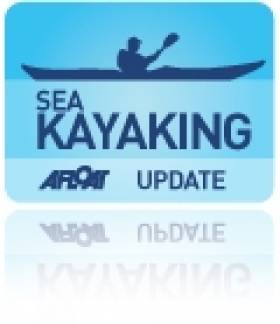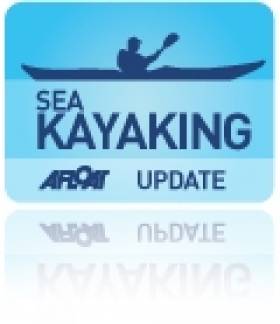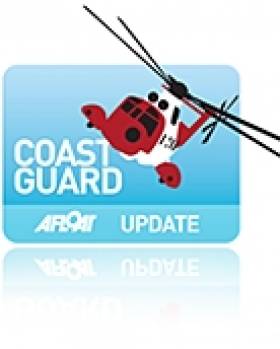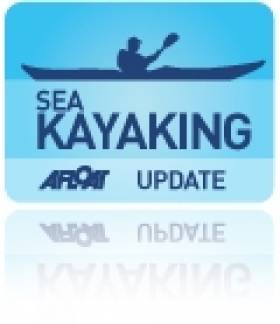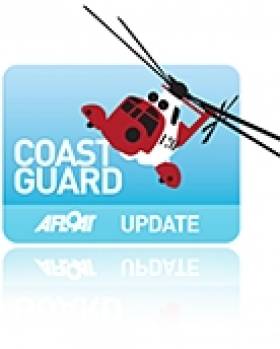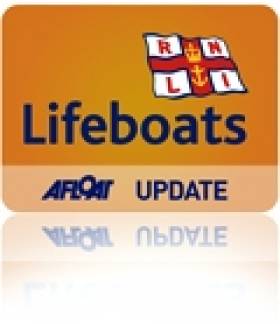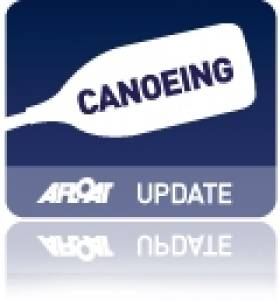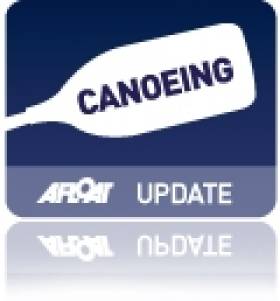Displaying items by tag: kayak
Mark Your Canoe or Kayak for Safety Purposes
HM Coastguard dealt with 578 incidents involving canoes and kayaks in 2012. Sadly, there were nine fatalities.
The type of call outs ranged from falling in to the water, fighting with strong winds and rip tides, to a lack of survival equipment. But another key issue is canoes or kayaks that have been found drifting at sea or abandoned on shore. Coastguards often spend valuable time tracking down the owners to check if they're safely ashore or actually in trouble at sea. This occasionally involves a large-scale search and rescue mission, involving coastguard rescue teams, lifeboats and even search and rescue helicopters.
HM Coastguard has now produced a free ID sticker which owners can use to write their contact details on and stick on their canoe or kayak.
Anne Young, HM Coastguard's National Liaison Officer for canoes and kayaks, says:
"We recommend that you clearly mark your canoe or kayak with your name and contact details so that if it is lost, stolen or abandoned we can contact you to make sure that you are safe. This will save a lot of time, and could give us extra information we need to help you if we believe you're in difficulty at sea.
"The new stickers are very easy to use. Just write your contact details onto the paper side, stick the laminate over the top and stick onto your canoe or kayak.
"For canoeists and kayakers, our other safety advice is to wear a buoyancy aid and make sure you carry a VHF radio, so you can contact the Coastguard on channel 16 if you get into difficulty. A Personal Locator Beacon ( PLB) is also a good idea for more remote locations, so an accurate position of where you are can be sent direct to the Coastguard. And remember to tell a shore contact where you are going and when you expect to return so that they can contact us if you do not come home as expected."
Irish Kayak Couple Honoured with Mexico's Ohtli Award
#kayak – Jim and Maria Kennedy of Atlantic Sea Kayaking have been honoured by the Mexican government with the highest award that can be bestowed on a non Mexican, The Ohtli Award.
This special honour is awarded by the Mexican government to individuals for promoting Mexico abroad. "Ohtli" is the Aztec word for pathway. It has only ever been awarded worldwide to 250 people outside Mexico.
Last year's recipient was the music legend Paddy Moloney who, along with the Chieftains and Ry Cooder recorded the album "The St Patricios" commemorating the Irish Regiment who changed their allegience and fought with Mexico against The United States in the War of Independence.
The award was presented by the Mexican ambassador, Carlos Garcia De Albo during the Mexican Independence Day celebrations at the Clyde Court Hotel in Dublin and was witnessed by about 1000 guests of the embassy including The Lord Mayor of Dublin Oisin Quinn, many ambassadors of other countries as well as family and friends of the Kennedys.
Through their business Atlntic Sea kayaking, Jim and Maria are directly responsible for hundreds of Irish people over the last 25 years having an unforgettable trip of a lifetime to Mexico, and indirectly probably thousands more through their promotional talks and video presentations over Europe.
"It's an easy sell" said Jim after he was presented with the award, "Mexico sells itself with its magnificent natural beauty, fascinating art and culture, wonderful food and more importantly, its passionate and fun loving people."
Atlantic sea kayaking, a homegrown family business founded in 1995, has grown into an International Adventure Travel enterprise. Jim is also an ambassador for Adventure Tourism and The Wild Atlantic Way with Failte Ireland.
This award means that Jim and Maria Kennedy will be lifelong ambassadors and promoters of the delights and charms of Mexico and will continue to forge new links to connect Ireland and Mexico. Their next scheduled tour in Mexico will be February 2014 to witness the Grey Whale migration from Canada.
Kayaker Walks Miles to Raise Alarm After Capsize
#kayak – A kayaker has been located safe and well after he capsized in the Gulf of Corryvreckan.
Belfast Coastguard was contacted by a local fishing vessel just after 3.30pm this afternoon, reporting that they had spotted the kayak upside down in the water, along with other items including a lifejacket, food parcels, a paddle and a wetsuit.
The Jura Coastguard Rescue Team, the RNLI Islay all-weather lifeboat and the Royal Navy search and rescue helicopter from Prestwick were sent to the scene to carry out a thorough search. Belfast Coastguard also issued a mayday relay broadcast on VHF Channel 16 to other vessels in the area to report back if they had any information.
Police Scotland then contacted Belfast Coastguard to let them know that the man had turned up at a house nearby. It emerged that he had capsized and was unable to collect his equipment so swam to shore. He then walked several miles barefoot to a house to raise the alarm.
Graeme Watters, Watch Manager at Belfast Coastguard, said:
"This kayaker was well equipped but unfortunately capsized and wasn't able to collect all of his equipment.
"We always advise kayakers to wear a buoyancy aid, carry distress flares that are stowed where you can reach them and carry a VHF marine band radio so you can contact the Coastguard if you get into difficulty or distress.
"It may also be worth signing up to CG66, which is free and records details of your kayak and shore contacts for use in an emergency."
Kayak Challenge in Dublin City for RNLI Lifeboat Charity
Dublin City Kayaking Challenge in aid of the RNLI
#kayak – The first ever 5km kayaking challenge in Dublin's City Centre will take place on Sunday 28th April in aid of the RNLI.
Competitors will start at the Jeannie Johnson on Custom House Quay and kayak to the Aviva Stadium on the River Dodder and back. The race will be have four different start times. The first groups will start at 9:30am and the last group at 2pm. The competition is open to all members of the public. All proceeds will be donated to the RNLI, the charity that saves lives at sea. The cost to enter is €50 for two people in a two person kayak or €40 for two students. Tickets are available online from http://citykayakingchallenge.eventbrite.ie/ . The Dublin City 5km Kayaking Challenge is proudly sponsored by City Kayaking.
It will be a fun day for kayakers and spectators alike. There will be a barbeque, ice-cream, a raffle and prizes for the winning competitors.
For further information please contact Gavin on 086 071 8414 or email [email protected] .Donations can be made through the mycharity.ie page here http://www.mycharity.ie/event/dublincitykayakchallenge/ .
'Funds raised by the 5km City Centre Kayaking Challenge will ensure that our volunteer lifeboat crews go to sea with the best equipment available to ensure their safety when saving lives at sea' said Rose Michael, Howth RNLI Fundraising Chairperson.
Rescued Kayakers Praised for Being Well Equipped
#kayakrescue – Two kayakers, one of whom was rescued from the sea off Rhoscolyn on the Irish Sea yesterday afternoon, have been praised for being well equipped and prepared for emergency situations.
Holyhead Coastguard received a 999 call from a member of the public at 12.20 today reporting that a kayaker was in difficulty in the water, off Rhoscolyn. Shortly afterwards, the Coastguard received a mayday broadcast from the kayaker, requesting assistance.
The Trearddur Bay RNLI Lifeboat was launched, the rescue helicopter from RAF Valley was scrambled and the Holyhead Coastguard Rescue Team was sent to the scene. Once the lifeboat arrived on scene, it quickly located one kayaker and rescued him from the water. He was then airlifted to hospital, suffering with the effects of hypothermia. The other kayaker was found shortly afterwards. He had managed to swim to shore and was safe and well.
Mark Craddock, Holyhead Coastguard Watch Manager says:
"The kayakers were very well prepared and followed all of the correct procedures to ensure that rescuers would be able to locate them quickly should they run into difficulties. Earlier this morning, before the incident, they had been in contact with us and had given us a traffic report so that we knew how many kayakers were out on the water and where they intended going. They were equipped with a hand held VHF radio which meant that they were able to make a mayday broadcast from the water and to alert the Coastguard about their rapidly deteriorating situation. Time was of the essence particularly as the water is probably only about eight or nine degrees at this time of the year."
Isle of Man Kayak Girl Brought to Safety
#rescue – A 7-year-old girl was rescued from the bay at Derbyhaven yesterday afternoon after being swept offshore by southwesterly winds.
The Marine Operations Centre based at the Isle of Man contacted Liverpool Coastguard at 1.26 pm to let them know that they been alerted to a young child being blown offshore in a sea kayak. The mother of the child had swam approximately 100 metres out to try and rescue the girl but was not able to reach her and was forced to turn back.
Liverpool Coastguard requested the launch of the Ronaldsway Airport Inshore Rescue Boat and the Port St Mary RNLI lifeboat, along with sending the Castletown Coastguard Rescue Team. Concerned that the child might get swept out of the bay, Liverpool Coastguard also contacted the HSC Manannan Ferry and asked them to keep a visual of the child at a safe distance to ensure she was not swept out further.
Two other sea kayakers on scene attempted to rescue the child but all three ended up on the rocks. The Ronaldsway Airport Inshore Rescue Boat then brought the girl and her kayak back to shore.
Volunteers in the Castletown coastguard team spoke to the parents of the girl and gave some safety advice about the dangers of offshore winds.
Paul Parkes, Liverpool Coastguard Watch Manager said:
"When undertaking any leisure activities on the water with young children we would always recommend that they are accompanied by a capable adult. As this incident shows, offshore winds can be extremely hazardous to children in inflatables or any craft where they are not able to make it back to shore unaided."
Shouts from a Cave Lead Baltimore Lifeboat to Kayakers
#lifeboat – At 00:30 this morning, after a search of many hours for two kayakers who had been reported missing from Rosscarbery, shouts were heard from a cave near Millcove. Baltimore Inshore Lifeboat Helm John Kearney investigated and found the two 17 year old males who had taken shelter in the cave. A smaller Y boat was launched from the all weather lifeboat Alan Massey which ferried the boys individually from the cave and then onto the inshore lifeboat which landed the teenagers at Millcove. Both RNLI Lifeboats are now returning to station in Baltimore.
Additional report from Baltimore lifeboat station on Sunday 1500hrs
Further details have emergered on the dramatic events of last night (Saturday 4 August 2012) and early this morning which saw two young kayakers rescued after they became trapped in Mill Cave, West Cork. The rescue involved a Baltimore RNLI crewmember swimming into a narrow cave in challenging sea conditions and bringing the two young kayakers to safety.
The two teenagers, a boy and a girl, had been reported missing from Rosscarbery on Saturday evening after they had not returned home at their expected time. A huge search was mounted involving Balimore RNLI and Irish Coast Guard Units.
At 23:00, while the search was ongoing, Baltimore RNLI lifeboat Helm John Kearney heard what he thought was a faint whistle coming from Pouladav cave, known locally for its' blowhole. The lifeboat crew were aboard the RNLI Atlantic 75 inshore lifeboat Bessie but could not enter the cave due to the dangerous surf conditions. The lifeboat crew then launched a small boarding boat from their all weather lifeboat Alan Massey with volunteer crewmembers Ger Sheehy and Sean McCarthy. This smaller boat could only advance within 50 metres of the cave summit due to the area being awash with surf and again too dangerous. RNLI crewmember John Kearney, an experienced sea swimmer, went into the water and swam the last 50 metres to reach the two kayakers. The boy and girl were clinging to a rock surface while waves broke around them.
Both the young people were cold and tired. John carried each of them in turn over his shoulder in chest high water to the boarding boat. Considerable skill was required of Ger Sheehy to keep the small boat steady so that they could be retrieved with the assistance of Sean McCarthy. The teenage girl and boy were then taken to the inshore lifeboat, where they were given a medical assessment and deemed to be fit to return to shore. The inshore lifeboat brought them directly to their families at Mill Cove, where they were assessed by a Doctor. The girl and boy were taken onboard the inshore lifeboat, which then brought them directly to their families who were anxiously waiting at Mill Cove. The entire incident took place in the hours of darkness
Commenting on the rescue Baltimore RNLI Helm John Kearney said, "the water in the cave was churning like a washing machine. However I was convinced that I had heard a sound and was concerned for the safety of the kayakers. I will never forget the relief I felt when I saw the two young people alive and safe inside the cave. They were very brave and did exactly what they needed to do to get to safety. We are very lucky to have two lifeboats in Baltimore, and by using all of our available resources and training we were able to bring these young people to safety."
Two Kayakers Washed Ashore
Two kayakers on the Irish Sea were given medical attention this evening after abandoning their kayaks whilst out at sea off Morfa Nefyn and spending three hours in the water trying to make it back to shore.
North Wales Ambulance Control contacted Holyhead Coastguard at 10.06 pm to report that a member of the public had called to inform them that two kayakers had knocked on their door asking if they could come inside to warm up after being in the water, and that they potentially needed medical attention. Holyhead Coastguard sent the Porthdinllaen Coastguard Rescue Team to meet the casualties to find out what had happened and assist in locating their kayaks.
Once on scene, the coastguard rescue team reported back to the Operations Room that the two male kayakers (one aged 23 and one aged 24) had set out from Morfa Nefyn beach at 7pm, had gone out approximately half a mile and then panicked, abandoned the kayaks and been washed ashore. When they finally made it ashore just before 10pm, they knocked on the door of a nearby house to ask for help and an ambulance was called. The coastguard rescue team spoke to the two casualties and the kayaks were recovered.
View Larger Map
Barry Priddis, Holyhead Coastguard Watch Manager said:
"Although this incident contains a catalogue of errors that we would warn against, the fact that these two kayakers were both wearing lifejackets undoubtedly saved their lives tonight. We always advise members of the public not to go out on the water in conditions or distances that are beyond their capability, and if they do find themselves in such a situation, to call the Coastguard and ask for help. Attempting to swim ashore is very dangerous, especially with outside temperatures as they are at the moment and had these two not been wearing lifejackets which kept them afloat we could be looking at a very different outcome."
Search for Missing Kayaker to Resume
Emergency services were set to decide this morning whether to resume the search for a kayaker who went missing on Carlingford Lough earlier this week, UTV News reports.
Area man Mark McGowan, 37, was last seen kayaking in the lough at 7.30pm on Monday evening.
His blue kayak was spotted by the Irish Coast Guard on Tuesday at Killowen Point, on the north side of the lough.
Dundalk Gardaí are co-ordinating the cross-border search operation, which was interrupted by bad weather early yesterday.
View Larger Map
Also assisting are the Irish rescue helicopter, Greenore coastguard, Kilkeel's RNLI lifeboat, the south Down coastguard team and the Community Rescue Service.
Meanwhile, the PSNI has appealed for anyone who might have information on McGowan's disappearance to get in touch.
McGowan is described as 5'7" tall, medium build, with a clean shaven, tanned complexion and short bleached blonde hair. He was last seen wearing a red jacket, blue jeans and white trainers.
Shooter Completes Solo Circumnavigation of Ireland by Kayak
Well-wishers broke out the champagne to welcome home Elaine 'Shooter' Alexander as she completed her solo circumnavigation of Ireland by kayak yesterday.
The first woman from Northern Ireland to complete such a feat, Shooter landed at County Antrim Yacht Club 71 days after setting off from the same spot on her 1,000-mile challenge to raise funds for local charity SHARE.
Shooter's skills were regularly tested to the limit. On one occasion she suffered severe sea sickness after getting caught in a large swell during a 12-mile crossing near Brandon Bay.
“I was fully committed with a cliff face on one side and a long paddle to America on the other, so I had to continue despite being severely ill,” she said.
But the challenge wasn't all doom and gloom. One highlight was when Shooter was joined by a pod of six dolphins for over an hour near Easkey on the Sligo coast. And above all, the people she met along the way have left a lasting impression.
“The support from the kayaking community and local fisherman has been great," she said. "Kayakers have paddled stretches with me, met me with tea and biscuits, gave me warm beds and hot showers, shared invaluable local knowledge – I can’t thank them enough."



























